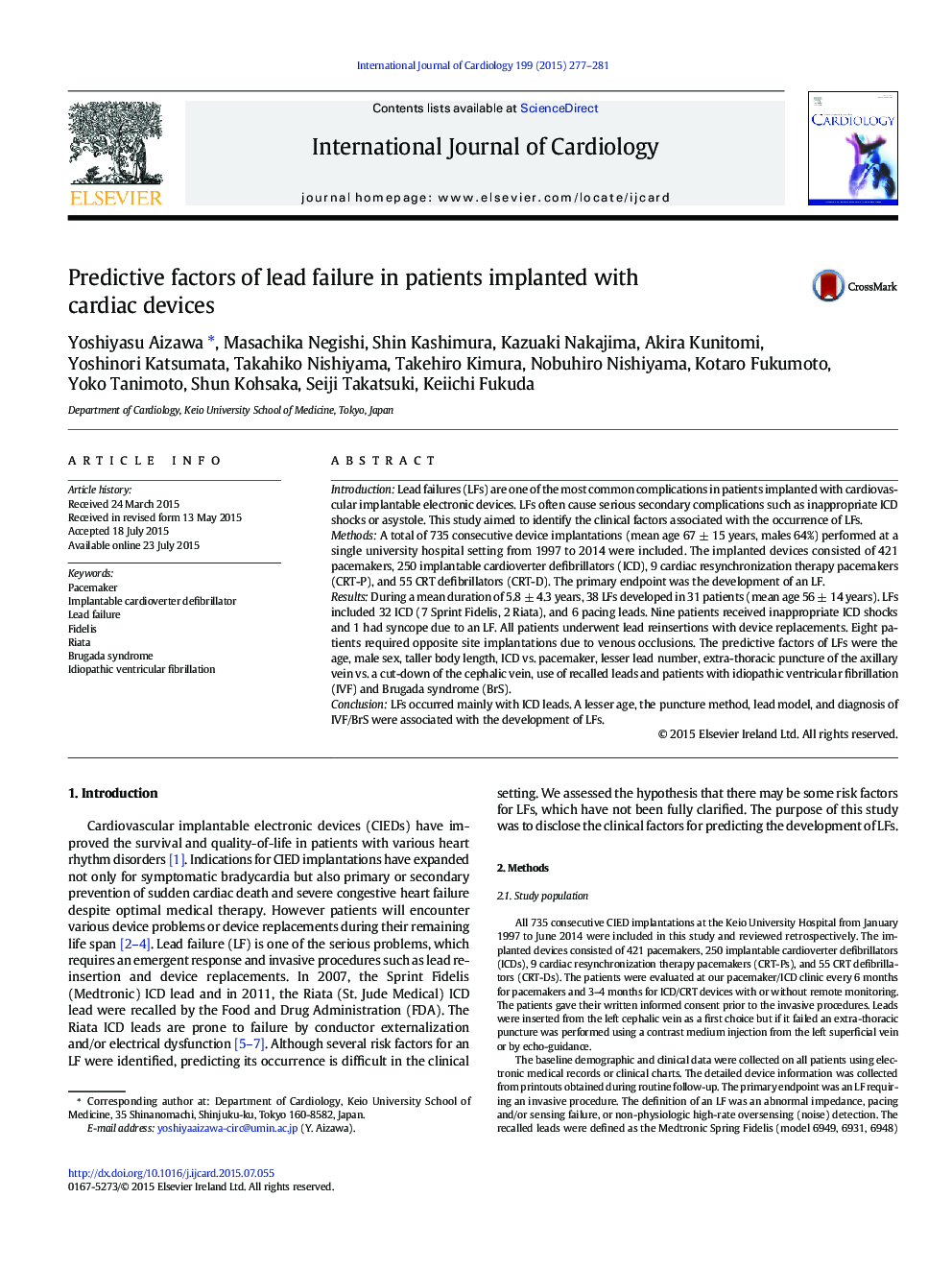| Article ID | Journal | Published Year | Pages | File Type |
|---|---|---|---|---|
| 5965882 | International Journal of Cardiology | 2015 | 5 Pages |
IntroductionLead failures (LFs) are one of the most common complications in patients implanted with cardiovascular implantable electronic devices. LFs often cause serious secondary complications such as inappropriate ICD shocks or asystole. This study aimed to identify the clinical factors associated with the occurrence of LFs.MethodsA total of 735 consecutive device implantations (mean age 67 ± 15 years, males 64%) performed at a single university hospital setting from 1997 to 2014 were included. The implanted devices consisted of 421 pacemakers, 250 implantable cardioverter defibrillators (ICD), 9 cardiac resynchronization therapy pacemakers (CRT-P), and 55 CRT defibrillators (CRT-D). The primary endpoint was the development of an LF.ResultsDuring a mean duration of 5.8 ± 4.3 years, 38 LFs developed in 31 patients (mean age 56 ± 14 years). LFs included 32 ICD (7 Sprint Fidelis, 2 Riata), and 6 pacing leads. Nine patients received inappropriate ICD shocks and 1 had syncope due to an LF. All patients underwent lead reinsertions with device replacements. Eight patients required opposite site implantations due to venous occlusions. The predictive factors of LFs were the age, male sex, taller body length, ICD vs. pacemaker, lesser lead number, extra-thoracic puncture of the axillary vein vs. a cut-down of the cephalic vein, use of recalled leads and patients with idiopathic ventricular fibrillation (IVF) and Brugada syndrome (BrS).ConclusionLFs occurred mainly with ICD leads. A lesser age, the puncture method, lead model, and diagnosis of IVF/BrS were associated with the development of LFs.
